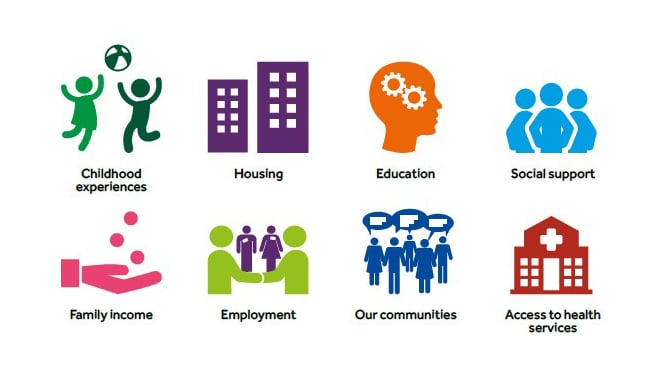November 30, 2021
Assessing social determinants of health (SDoH) and taking them into consideration in clinical care has been a growing topic of interest in promoting health equity. Unmet social needs defined by a lack of basic resources such as food or safe housing have been associated with poorer health outcomes. Our data shows the impact of SDoH on health outcomes holds true for patients enrolled in Collaborative Care—for example, patients who experience one or more unmet social needs such as poor housing quality are predisposed to mental health conditions like depression and anxiety.
Collaborative Care is an evidence-based model used to identify and treat patients with depression and anxiety in primary care with an emphasis on targeted outcomes and a patient-centered approach.1
Concert Health partners with medical groups and health systems to deliver Collaborative Care to help manage a physician’s population of patients with behavioral health needs.
In some cases, providers may be reluctant to refer patients with unmet social needs for behavioral health services given assumptions about financial instability and mental wellness. Implicit bias studies of clinician-patient interactions indicate that biases are likely to influence diagnosis and treatment decisions.2 We hypothesize that many patients referred to Concert Health for unmet social needs alone will not be flagged for depression or anxiety and in fact need help with both.
Our data shows that patients enrolled in Collaborative Care who later disclosed an unmet social need reported worse symptoms of depression when initially referred to care. Importantly, these symptoms improved at a slower rate versus other patients in treatment for behavioral health.
- Patients with at least one unmet SDoH initially scored 2 points higher on the degree of depression using the PHQ9, indicating symptoms that were 18% more severe by comparison to the general population.
- Patients with at least one unmet SDoH had initial scores in line with the general population on the degree of anxiety using the GAD7.
- Using a benchmark of a 50% or a ten-point improvement in symptoms of depression and anxiety, only 31.5% patients with unmet SDoH met this benchmark in the first ninety days of care, versus 44% for the general population.
These preliminary findings present an opportunity to better understand the relationship between mental health and SDoH, and inform complementary interventions within Collaborative Care. Our working hypothesis is that addressing SDoH has a positive impact on mental health outcomes. Additionally, offering providers assistance with patients’ unmet SDOH needs will assist in identifying patients with depression and providing treatment that may not have been referred for treatment otherwise.
References:
- Advancing Integrated Mental Health Solutions (2021). Collaborative Care. Retrieved from https://aims.uw.edu/collaborative-care
- FitzGerald, C., Hurst, S. Implicit bias in healthcare professionals: a systematic review. BMC Medical Ethics 18, 19 (2017).
